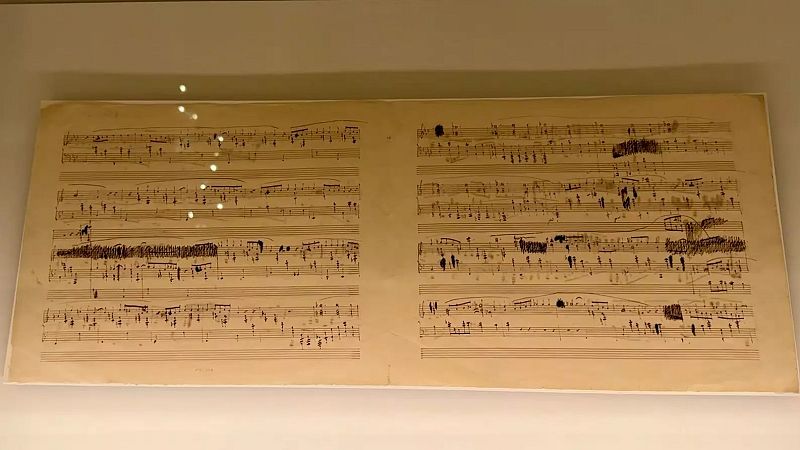A Convergence of Art and Friendship in the Heart of Romanticism
In the early 19th century, a unique group of artists and intellectuals gathered in the Parisian district known as New Athens (Nouvelle Athènes). Among them were Frédéric Chopin, George Sand, Ary Scheffer, and Eugène Delacroix. These individuals, though from different artistic backgrounds, formed deep bonds that shaped the cultural landscape of their time. Their shared passion for art, music, and literature created a vibrant community that transcended mere friendship.
At the center of this artistic circle was Ary Scheffer’s studio on rue Chaptal, now home to the Museum of Romantic Life in Paris. This space became a hub where creativity flourished, and the boundaries between disciplines blurred. The legacy of this gathering is now being celebrated through an exhibition titled Romantic Life. Chopin, Scheffer, Delacroix, Sand at the Frédéric Chopin Museum in Warsaw. Curated by Seweryn Kuter and Urszula Król, the exhibition offers a multidimensional exploration of the relationships and inspirations that defined this era.
The Chopin Experience: A Journey Through Time
One of the most immersive aspects of the exhibition is the recreation of Chopin’s creative world. Visitors are transported to the estate of George Sand, Chopin’s partner, in Nantes. According to Dr. Artur Szklener, director of the Frédéric Chopin Institute and curator of the musical component, this experience aims to evoke the atmosphere of Chopin’s daily life.
The exhibition features 59 objects on loan from the Museum of Romantic Life in Paris, divided into four thematic sections. The first section, Ary Scheffer’s Atelier, serves as the starting point of the journey. It showcases works by Scheffer himself, alongside pieces by his contemporaries and close friends. This space highlights the interconnectedness of the artists who frequented the studio, creating a vivid picture of their collaborative spirit.
Exploring Romantic Themes
The second section, Romantic Themes, delves into the shared motifs that define Romantic art across cultures. Urszula Król, co-curator of the exhibition, explains that these themes—such as the ballad—are present in literature, visual arts, and music alike. The section emphasizes how emotions, genres, and heroes unite different artistic expressions during the Romantic period.
Visitors will encounter the ballads of Frédéric Chopin, which reflect the emotional depth and narrative power characteristic of the era. This section not only celebrates the artistic achievements of the time but also underscores the universal nature of Romantic ideals.
The Social Circle of George Sand and Frédéric Chopin
The third part of the exhibition focuses on the social circle surrounding George Sand and Frédéric Chopin. It provides insight into their friendships and artistic exchanges, highlighting the complex and emotionally rich relationship between the two. This section reveals how their interactions influenced each other’s work and contributed to the broader cultural movement of Romanticism.
The relationships within this circle were not only personal but also deeply professional. They fostered a network of artists, writers, and musicians who inspired one another and pushed the boundaries of their respective fields.
Souvenirs: Preserving Memory and Emotion
The next section, Souvenirs, holds particular emotional significance for the curators. These objects, created to remember friends and loved ones, serve as a testament to the enduring nature of human connections. Urszula Król explains that these mementos, whether simple or elaborate, aim to preserve memory and ensure that the essence of friendship and love remains intact beyond the limitations of time.
This section invites visitors to reflect on the importance of memory and how it shapes our understanding of the past.
Small Sculptures: Reflections of an Era
The exhibition concludes with a section dedicated to Small Sculptures, a genre that was highly popular during Chopin’s time. These objects offer a glimpse into the aesthetic preferences of the era, showcasing what people admired and collected. The curators emphasize that these sculptures reflect the artistic sensibilities of the time and the desire to surround oneself with beauty and meaning.
Through this exhibition, the curators hope to immerse visitors in the spirit of the “New Athens,” a vibrant world where painters, writers, and composers came together to create something extraordinary. If even briefly, the exhibition aims to draw visitors into this world of creativity and connection.
Seweryn Kuter, co-curator, adds that if visitors feel drawn into this world, even for a moment, the exhibition will have succeeded in its purpose.







